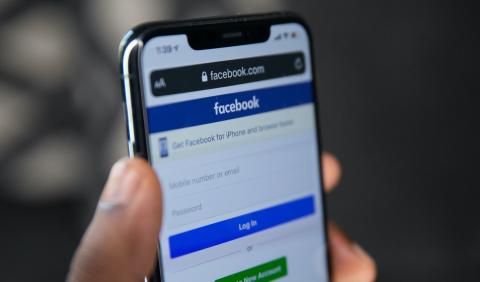Photo Credit: Solen Feyissa on Unsplash
It’s been 20 years since Facebook broke onto the scene and began gathering data on millions of Americans. Every hour of every day, of every month, of every year, Silicon Valley continues to gather billions of data points about everyday Americans. They know what we want before we know we want it.
And now, they’re ready to tell us who we will vote for before we’ve made up our own minds.
In 2020, there were 159,633,396 total votes cast. Biden and Trump accounted for 155,506,056 of those votes. Never before had more than 140 million people voted in a presidential election. Biden received 81,283,098 to Trump’s 74,222,958. Each candidate received more votes than any previous candidate for president. The Electoral College tally was 306 for Biden and 232 for Trump.
Biden’s margin of victory in both the popular vote and the Electoral College votes seems large but that’s not the whole story.
Just 42,921 votes in 3 states actually decided the winner. A few more votes in Arizona (10,457), Georgia (11,779), and Wisconsin (20,682) would have provided the exact number of electoral votes Trump needed to tie Joe Biden in the Electoral College.
Facebook Founder/CEO Mark Zuckerberg and his wife bet heavily on Biden and the Democrats, “investing” over $490 million in nonprofit corporations that worked directly with election officials in each of these states to “increase voter turnout.”
So, with billions of data points to measure the propensity of nearly every American to vote for one candidate or another, one can make an argument that Artificial Intelligence, or at least Silicon Valley intelligence, helped determine the winner without ever telling a single voter “who” to vote for. All they had to do was get voters with a propensity to vote “their” way to actually vote.
Let’s be clear though: this does not mean Zuckerberg, or the nonprofits his money funded, did anything illegal.
A comprehensive report, The Wisconsin Purchase, details the programs that were used to produce approximately 65,000 additional votes for Biden from “inactive voters.” Remember, in 2020 America was in the throes of COVID-19 -- the perfect storm for manipulating voter turnout.
COVID restrictions resulted in a relaxation of voter identification, universal mail-in ballots, and ballot harvesting. For the first time ever, every registered household in Wisconsin received mail in ballots -- even those that should have been purged from the voter rolls.
Election officials teamed up with Zuckerberg-funded nonprofits in 5 Democratic-controlled cities and counties to send volunteers door-to-door to collect ballots from citizens fearful of leaving their homes to vote. Voter turnout in those Democratic cities set all-time records.
These same programs were duplicated in every swing state.
Sophisticated algorithms already exist that can predict if you will vote, when you will vote, whether you will vote at the polls or by absentee ballot, and ultimately for whom you are likely to cast your vote. You see the effects of the data gathering every day when you open your emails, check your Facebook page, send a tweet, watch a video, buy your groceries, purchase your gas, or just about do anything in your daily life these days.
Soon, polling will become irrelevant. Artificial Intelligence, leveraging the billions of pieces of data collected every day, will most accurately predict who will vote – and for whom.
In 2024, the presidential election can again be decided by voters who don’t normally vote. And these voters will be categorized in several tiers by the guardians of big data.
Tier one: the persistent voters who vote in every election, primary and general. These more partisan voters can be counted on to vote their party line and be a source for endless fundraising efforts. Money spent trying to change the minds of these voters is wasted. Instead, they will be targeted by fundraising emails, texts, and social media solicitations.
Tier two: the non-partisan voters who don’t openly disclose their party preference. They are also regular voters who vote in almost every election. Even if their family and friends don’t know who they vote for, they have provided countless data points that give Artificial Intelligence enough information to accurately predict who they are most likely to vote for. These voters are key targets for early voting and ballot harvesting.
Tier three: the voters who vote consistently, but not in every election. They occasionally skip primary elections or even general elections. But they can still cast a vote.
So, if just 42,921 voters made the difference in the outcome for President of the United States in 2020 – and Mark Zuckerberg alone spent half a billion dollars cajoling them to cast a ballot – we can be confident that advancements in Artificial Intelligence will be deployed in their full capacity in 2024 -- leaving us with one big question:
Is this what democracy looks like?
